The world of digital art opens up countless possibilities for you to express your creativity. One of the most effective techniques you should master is texture overlay. In this tutorial, you will learn how to effectively integrate textures into your Photoshop projects and make them a powerful tool in your artistic repertoire. Let's go through the steps together to achieve impressive results.
Key Insights
- Textures can make images more vibrant and realistic.
- The blending mode in Photoshop plays a crucial role in the representation of textures.
- Perspective distortion of textures is important to achieve realistic effects.
- With adjustment layers, you can effectively control color and lighting conditions.
Step-by-Step Guide
The following steps will guide you through the process of texture overlay in Photoshop so that you can create impressive compositions.
To start with texture overlay, you first need the right textures. An excellent source for this is the website cgttextures.com. There you will find a variety of textures that you can use for free. Browse through the categories and download the textures you like.
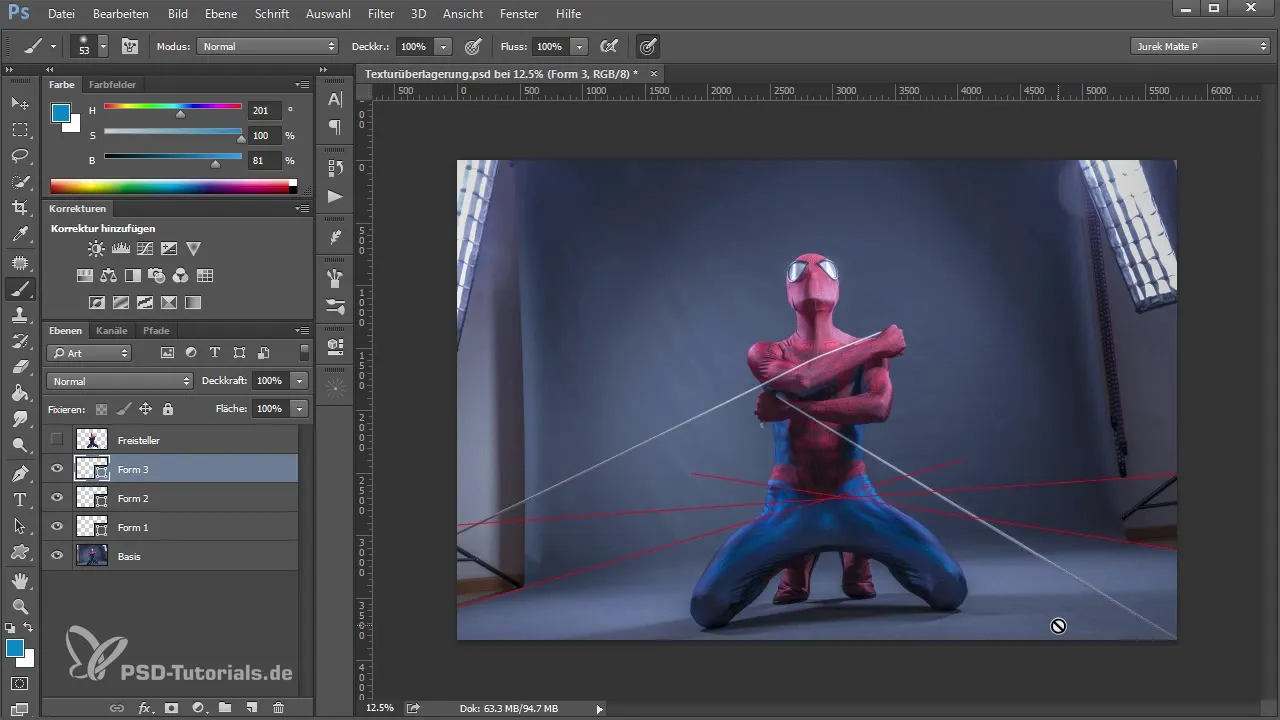
Once you have your desired texture, load it into Photoshop and drag it into your already opened project. It is important to enlarge the texture first so you can see how it interacts with your current image. Organize your layers by grouping them together.
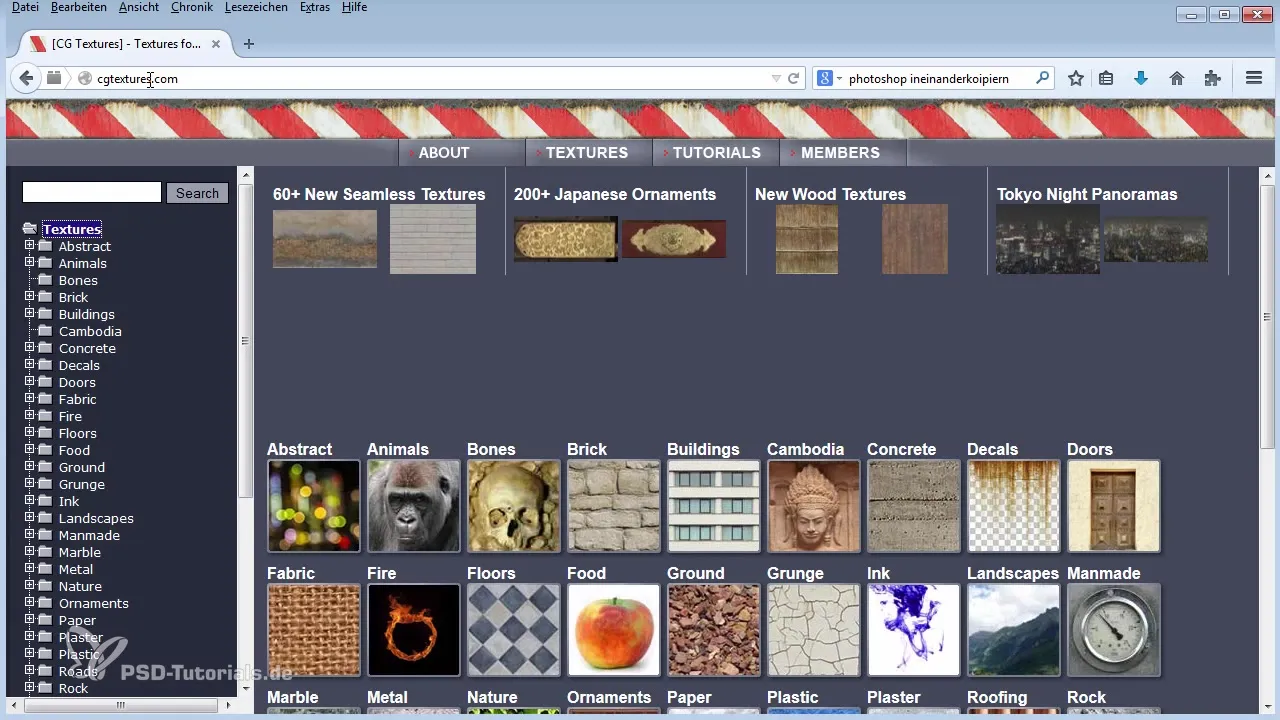
Now that your texture is in the image, you will notice that it covers your entire picture. To make the underlying details visible, you need to change the blending mode. A good start is the 'soft light' mode. This blends the texture with the image underneath.
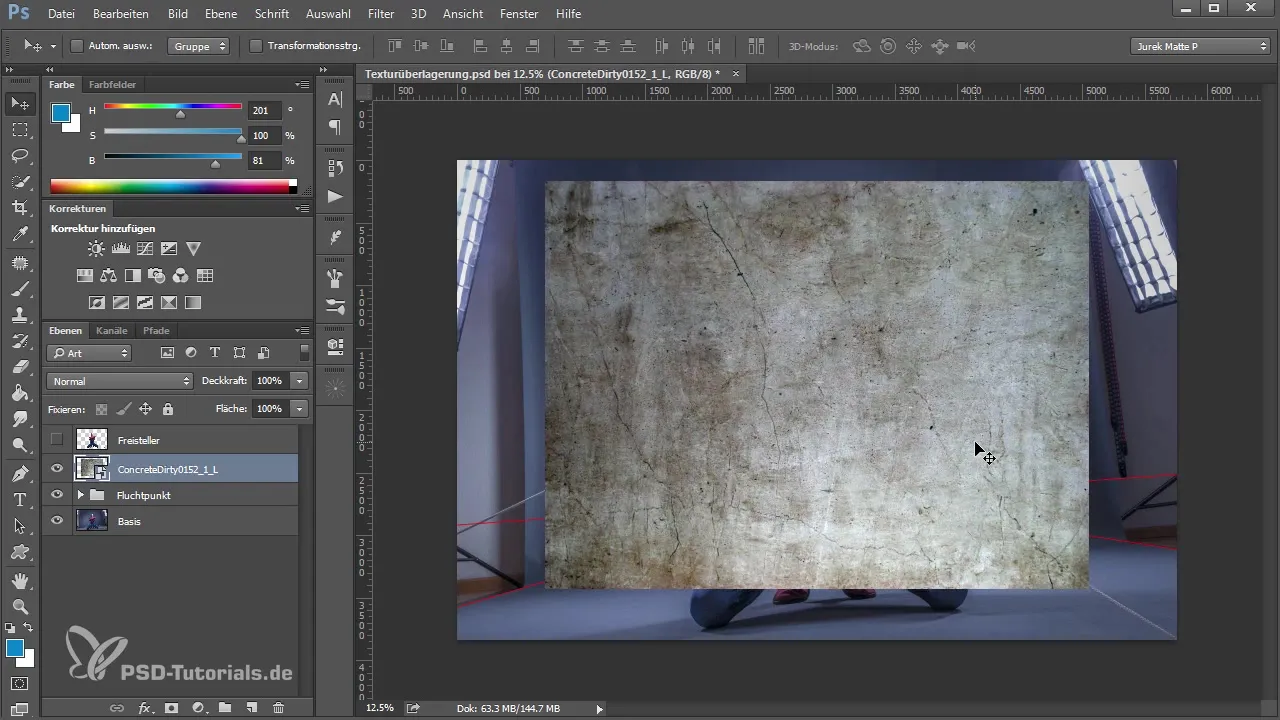
If the effect is not strong enough yet, you can change the blending mode to 'overlay'. This enhances the representation of the texture and highlights the lights and shadows more effectively. Pay attention to how the texture fits into the overall composition and which details become visible.
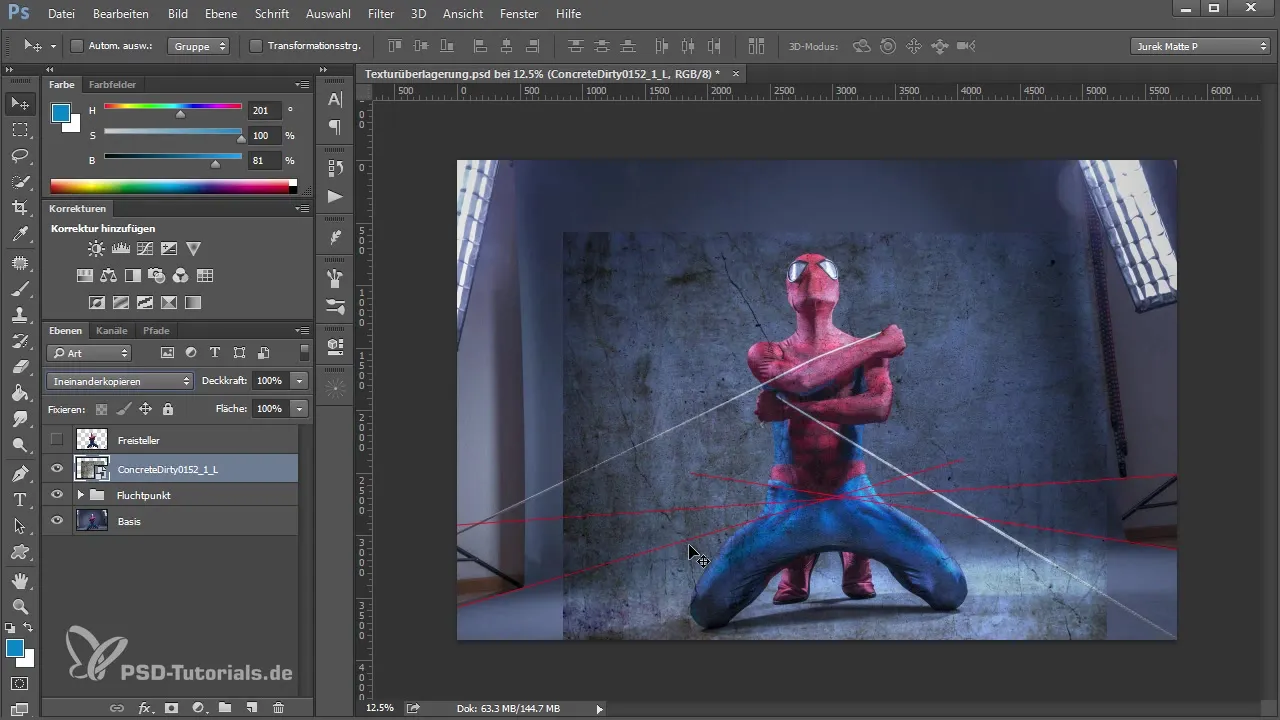
To realistically integrate your texture into the scene, a perspective distortion is necessary. Activate the transform options and drag the texture to fit the perspective of your image. Rotate the texture to the correct angle and position it accordingly.
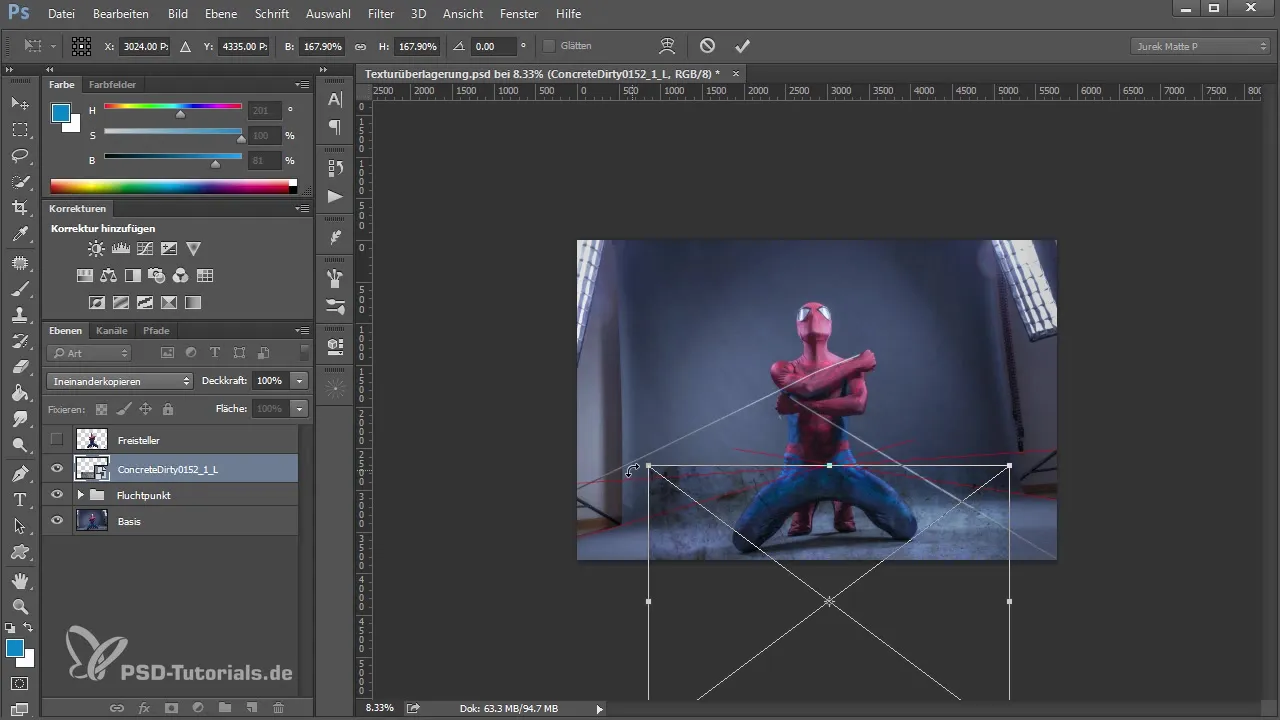
After positioning the texture, make sure that the edges are well integrated into the image. It may be helpful to mask or crop any protruding edges later. You want the effect to look seamless and realistic.
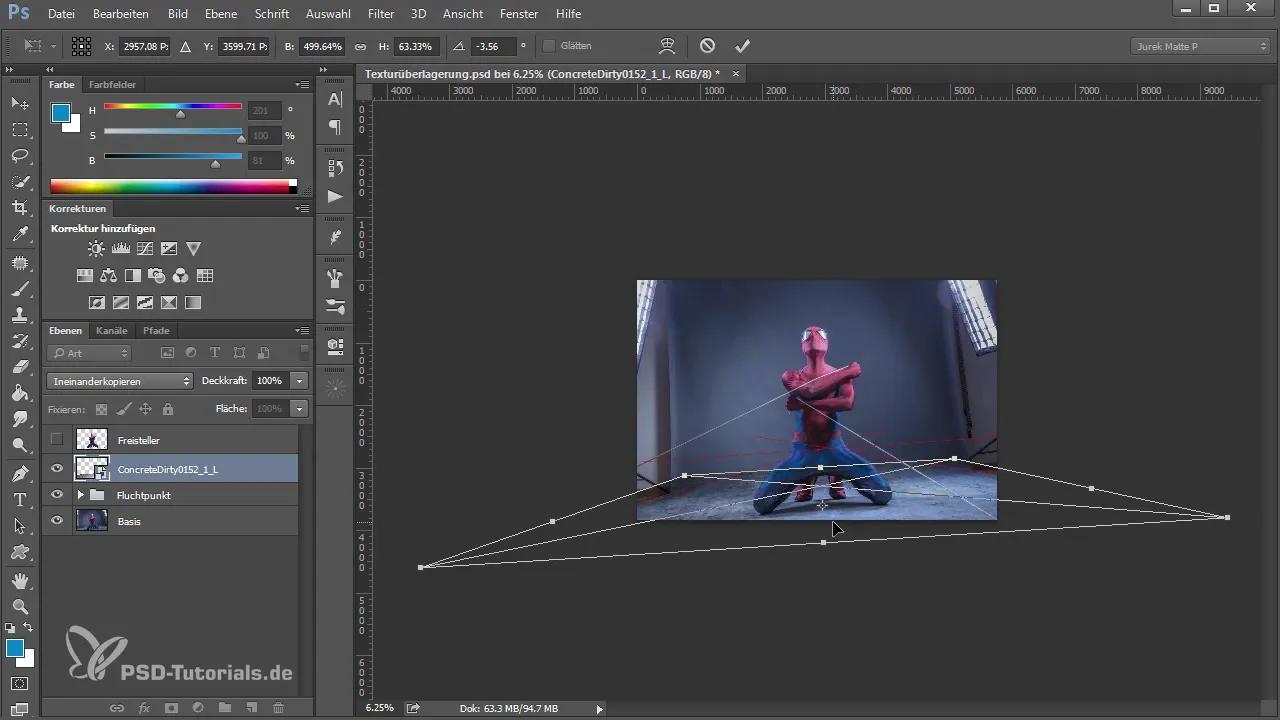
If the floor of your scene lacks structure, there are several ways to improve this. You can duplicate the texture layer to increase opacity. Alternatively, you can use adjustment layers to optimize brightness and contrast. Using a clipping mask, you can apply these adjustments solely to the respective layer.
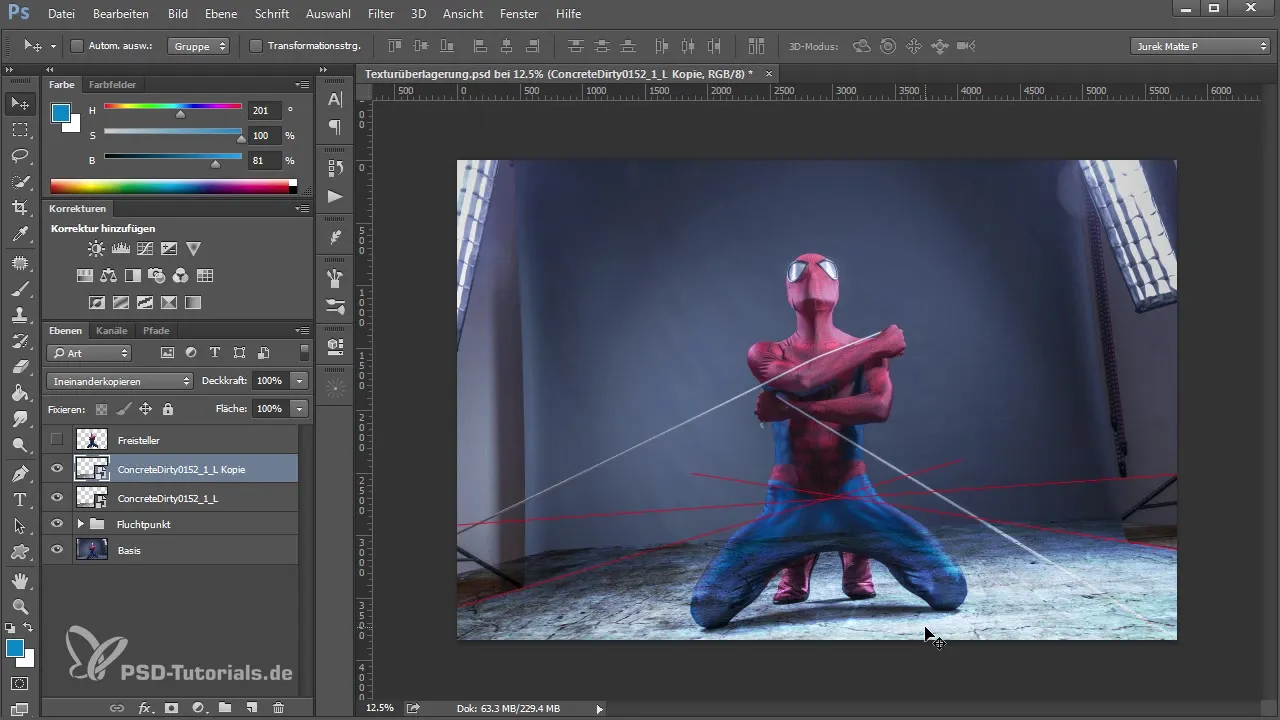
If you want to integrate more elements into your image, you can add textures again. When selecting a second texture, ensure it fits well into the overall picture. Load the texture into your project and scale it as needed.
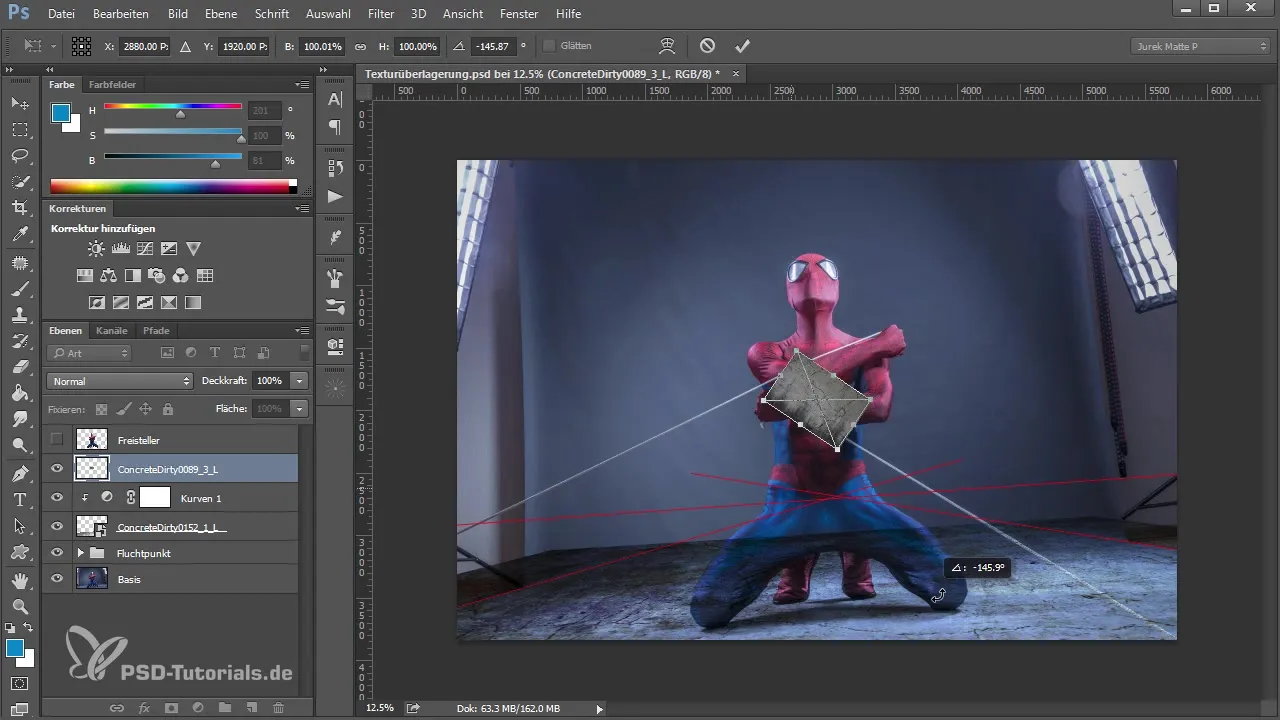
Apply buzzwords like 'soft light' or 'overlay' to the new texture as well to create beautiful combinations. Experiment with arrangement and blending modes to achieve the desired effect.
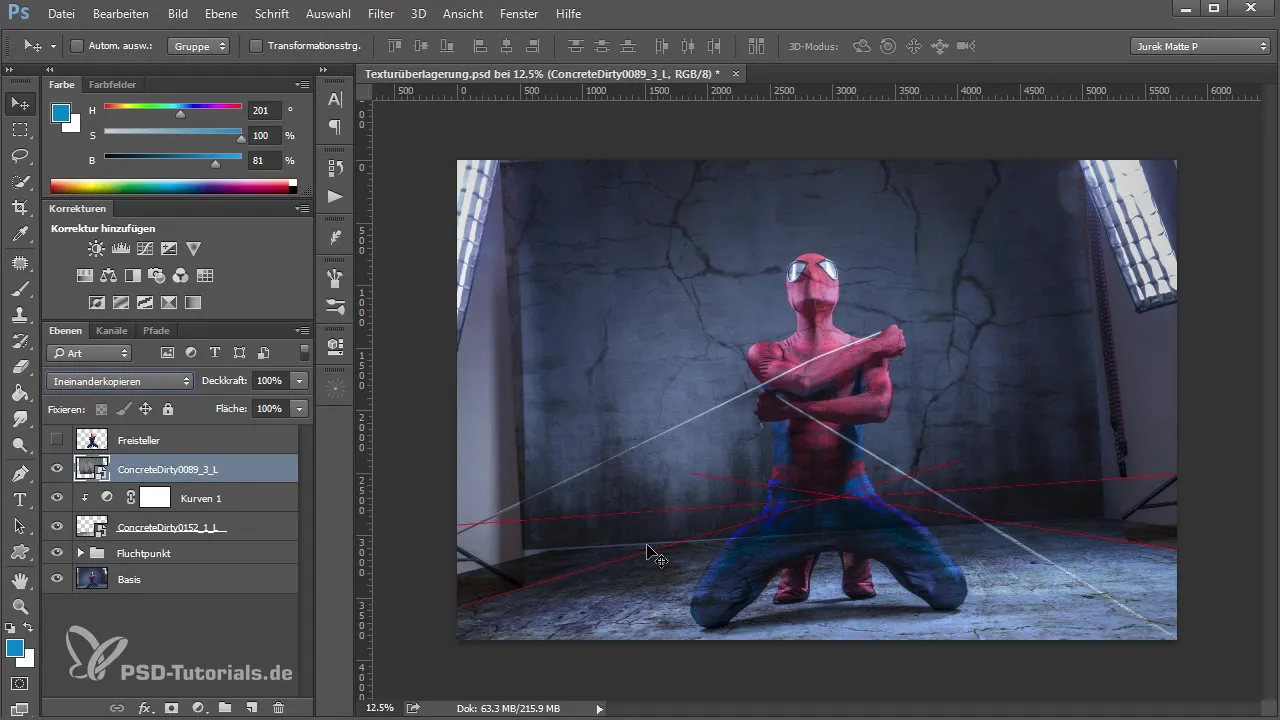
After adding all elements, carefully review your image. Pay attention to edges and transitions to ensure everything looks harmonious. Any flaws can be addressed later by masking the textures or making further adjustments.
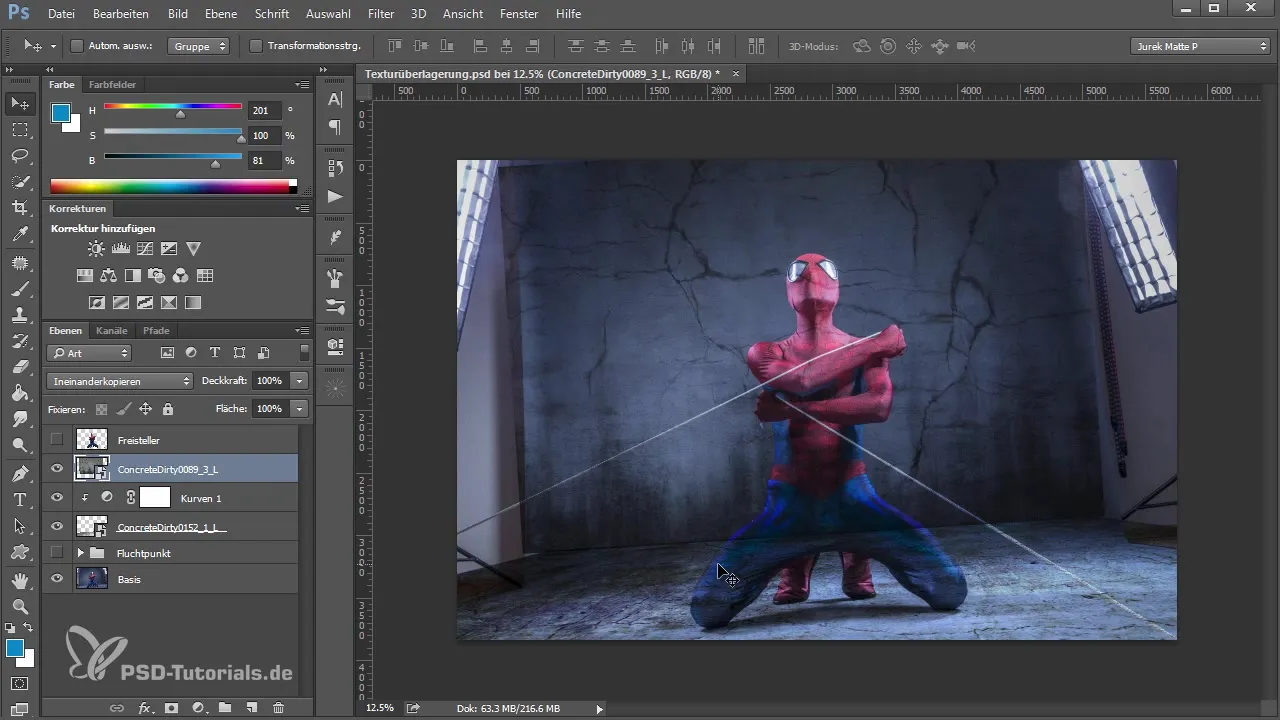
Summary – The Art of Texture Overlay in Photoshop
To create impressive texture overlays in Photoshop, you need to master textures and know how to effectively use the various blending modes. Additionally, distorting to the correct perspective is essential for realistic representations. Experimenting with adjustment layers allows you to optimize color and lighting conditions, significantly enhancing your work.
Frequently Asked Questions
How do I find free textures for Photoshop?Visit websites like cgttextures.com, which offer a wide selection of textures available for free use.
How do I change the blending mode of a layer in Photoshop?Select the layer and locate the dropdown menu "Blending Mode" in the layers panel to choose different options.
How can I distort a texture perspectively?Activate the transform options with Ctrl + T and drag the corners of the texture to match the existing perspective.
What do I do if the texture looks too intense?You can reduce the opacity or add an adjustment layer to optimize brightness and contrast.
Can I use multiple textures at the same time?Yes, you can use as many textures as you want in a project, as long as you work carefully with the blending modes and arrangement.


